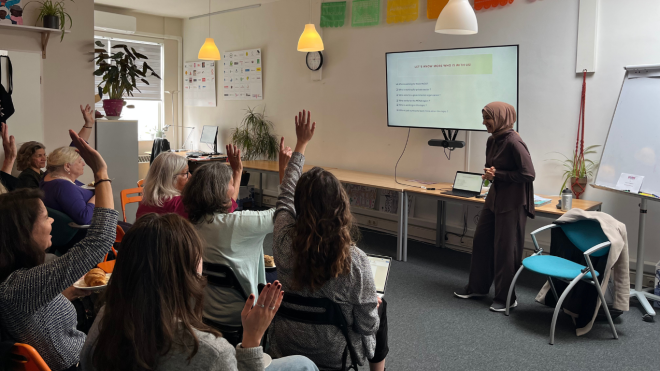
The impact of the climate crisis on women in Yemen
Currently Yemen is facing overlapping challenges: a prolonged conflict, a collapsing economy, and one of the most severe humanitarian crises globally. However, what often receives less attention is how climate change is intensifying these crises, especially for women and girls. Although Yemen contributes very little to global emissions, it is among the most climate-vulnerable countries in the world. However, this is not felt equally. Especially rural and agricultural communities are hit harder by the climate crisis, where women make up the majority of the informal labour force. Besides, during floods or droughts, women are expected to secure water, firewood, and food, often walking long unsafe distances.
This is not only concerning and unfair, but also not smart. Yemen women are crucial for the climate solution. They are healers, farmers, midwives, and educators. They organize mutual aid, care for the sick and manage community cohesion during displacement. Besides, in some regions, women have led local adaptation strategies, like conserving rainwater or restoring farmland. It is therefore concerning that these efforts are rarely acknowledged in climate strategies, and that women are often excluded from decision-making at all levels — from the household to the community and government.
How are Sexual and Reproductive Health & Rights related to the climate crisis?
Muna explained how the scarcity or absence of rainfall and drought in rural areas in Yemen, caused by the climate crisis, has led to a sharp decline in water levels in wells, the primary source of drinking water. This shortage results in overcrowding at available water sources and a reduced share of water for households due to increased demand and higher water costs.
She provided some concrete examples of how the climate crisis disproportionately affects women and girls, particularly in relation to SRHR. For example, limited access to clean water and inadequate personal hygiene, especially during menstruation, increases the risk of vaginal infections and other illnesses. Besides, many women and girls lack access to proper menstrual hygiene products, resorting to unsafe alternatives like old clothing, which are washed and reused without proper cleaning due to water shortages. This practice increases the likelihood of reproductive tract infections that could affect future fertility. But also physical and psychological burdens associated with fetching water and collecting firewood exacerbate reproductive health issues, including miscarriages, bleeding, and premature births. To mention some examples.
Considering this interconnection, what actionable steps can be taken to address the issue? What are possible recommendations?
It all first starts with awareness raising and education, teaching the communities on how the climate crisis affects women’s and girls’ SRHR, says Muna. This also needs to be taught at a national level, so policymakers can incorporate this into their legislation. Moreover, SRHR infrastructure needs to be upgraded, such as health centres, so they can respond to climate-related emergencies, and provide ambulance service for pregnant women, especially during floods or heavy rain.
Furthermore, there is the need to make communities’ livelihoods more resilient, by creating climate-resilient jobs, especially for women. But it is also urgent to install rainwater harvesting tanks to facilitate access to water as well as to develop resource-saving irrigation techniques to support agriculture amid more droughts. Among others.
Muna closed her intervention by emphasizing that there is an urgent need for comprehensive and integrated interventions to mitigate the impacts of the climate crisis on the sexual and reproductive health of women and girls in Yemen and worldwide.
How is Muna’s work related to the International Climate Conference (COP30)?
Muna advocates on the international level for the intersection among these topics, to make sure gender-just and effective policies are developed during the international climate conferences. She is active in the Women and Gender Constituency - one of the nine official stakeholder groups within the UN Framework Convention on Climate Change (UNFCCC)- as a co-focal point for the MENA region and works as a co-lead in the Agricultural thematic group.
Please read more about this lecture, based on Muna’s personal blog here.